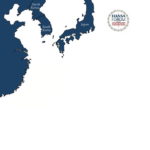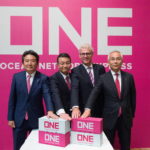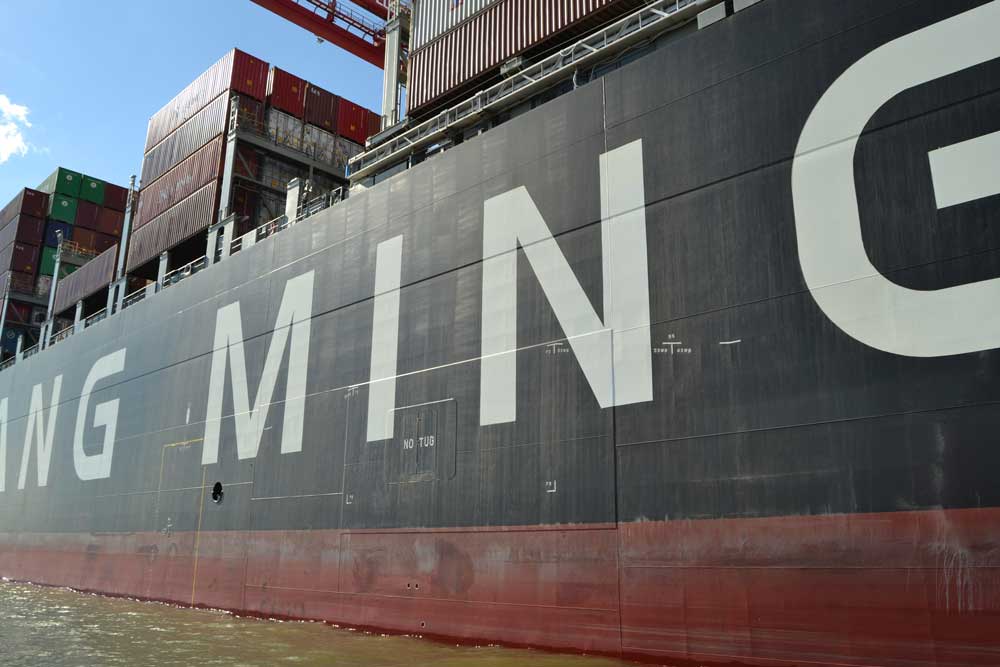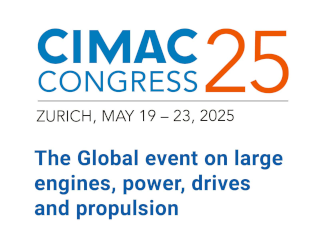Challenging market conditions have compelled Asian shipping lines and shipbuilders into consolidation. Zeng Xiaolin looks at the mergers on the horizon and the implications
As early as January 2017, speculation grew that COSCO, fresh from a merger with fellow Chinese state-owned enterprise China[ds_preview] Shipping Group, was making a bid for liner operator Orient Overseas Container Lines (OOCL). Both carriers are members of the »Ocean Alliance«, along with France’s CMA CGM and Taiwan’s Evergreen Line.
Finally, on 9 July 2017, COSCO and another state-owned enterprise, Shanghai International Ports Group, announced a 6.3 bn $ bid, putting the Chinese shipping giant on track to surpass CMA CGM as the world’s third largest shipping line.
OOCL’s parent OOIL cited market conditions as the reason for accepting COSCO’s offer. »As the industry consolidates at speed, with the largest players now having millions of TEUs in carrying capacity, the capital base necessary to operate successfully and to establish a place among the leading industry participants, is becoming increasingly sizeable,« said OOIL’s Andy Tung, running the family business in third generation. »The offer provides an opportunity for OOIL to continue to operate the OOCL brand, but as part of the China COSCO Shipping Group, and to bring together our operating model and our corporate culture with the competitive advantages of COSCO,« Tung explained.
PIL – or what will be next?
The 6.3 bn $ bid is a premium of approximately 55.2% over OOIL’s average closing price of 50.69 HK-$ (6.48 $) as quoted on the stock exchange for the 30 trading days immediately prior to the last trading date on 6 July 2017. It is likely that the Tungs will use the proceeds to develop their privately held shipping business, Island Navigation Corporation International Ltd, which owns eight medium-range products tankers.
As for COSCO, sources tell HANSA that the Chinese behemoth is unlikely to stop its acquisitions until it overtakes A.P. Møller-Mærsk as the world’s largest shipping line. In the meantime there could be another move: CMA CGM is willing to sell 24% of its shares and COSCO is said to be eyeing this.
French shipping consultancy Alphaliner has also suggested that Singapore’s Pacific International Lines (PIL) could be COSCO’s next possible acquisition target. PIL, which specialises in regional trades, declined to comment when contacted, citing commercial confidentiality. Instead, Alphaliner analyst Tan Hua Joo told HANSA: »PIL is the only mid-sized carrier of significant scale that is financially and politically unencumbered and this makes them an attractive target«. COSCO would probably also gain from PIL’s exposure to the African markets.
While Taiwanese line Yang Ming, Korean Hyundai Merchant Marine (HMM) and Israel’s ZIM Line remain independent, Tan said that these companies’ well-documented financial issues and ownership links to their respective countries’ governments make them unattractive acquisition targets.
Combining three into ONE
Apart from COSCO, there have been more activities among liner operators. In October 2016, Mitsui OSK Lines (MOL), Nippon Yusen Kabushiki Kaisha (NYK) and Kawasaki Kisen Kaisha (»K« Line), collectively known as Japan’s »Big Three«, announced the amalgamation of their container divisions, which comprised the shipping and terminal operations.
The merged entity, to be called »Ocean Network Express« (ONE), is scheduled to commence operations as part of »THE Alliance« (together with Hapag-Lloyd and Yang Ming) in April 2018. Incidentally, the concept of the trio merging their container units was first suggested in 2011, when liner operators began ordering ultra-large container ships in the wake of Maersk’s Triple-E commissions.
However, the companies’ respective presidents said at that time that such an amalgamation would be difficult to organise, due to their affiliations with different keiretsu (Japanese corporate group) where cross-affiliate holdings are common. MOL is part of the Mitsui group; NYK Line is a Mitsubishi company while »K« Line is part of the DKB keiretsu.
However, weak profitability and the rapid influx of ultra-large container ships made consolidation inevitable and swept away initial concerns. »K« Line explained: »The imbalance of supply and demand has destabilised the industry and have created an environment that is averse to profitability. Under these circumstances, we have decided to integrate our respective container shipping divisions to ensure stable, efficient and competitive business operations.«
Combined strength
ONE is expected to have combined sales of 15.4 bn $, realise significant cost savings and to operate a total capacity of 1.38 mill. TEU, making it the sixth largest liner operator in the world. ONE will be headquartered in Singapore, under the leadership of Jeremy Nixon, who currently heads NYK Line’s container business.
While the companies declined to comment on whether any layoffs will result, they asserted that the decision to combine their container operations was taken mutually and, industry insiders told HANSA that the Japanese government was not involved. »Low profitability, excessive competition and the need for scale economies are the main drivers behind the consolidation wave. But it doesn’t affect their corporate affiliations«, Alphaliner’s Tan told HANSA.
Korea’s operators to catch up
Recently, all 14 of South Korea’s liner and feeder operators declared to join forces to restore the country’s shipping reputation nearly a year after Hanjin Shipping’s collapse. Lead by Hyundai Merchant Marine (HMM) and assisted by the Korea Shipowners Association (KSA), all domestic shipping heavyweights agreed on forming the all new »Korea Shipping Partnership« and to collaborate mainly in the Intra-Asia segment as well as in other markets.
These 14 companies will cooperate to improve their competitiveness by sharing slots, rationalising and jointly managing routes and co-managing overseas terminal assets. According to Drewry’s senior analyst Simon Heaney the South Korean alliance appears to be an effort to avoid a repeat of Hanjin Shipping’s demise.
Shipyards on the spot
South Korea’s third largest shipbuilder, Daewoo Shipbuilding & Marine Engineering (DSME), faced bankruptcy after accounting fraud was allegedly committed by its previous CEOs, Ko Jae-ho and Nam Sang-tae. The fraud resulted in a massive 2.8 bn $ loss for 2015 and a 2.2 bn $ loss for 2016. The situation was compounded by the slowdown in newbuilding orders from 2015 onwards. Ko was jailed nine years this year while Nam’s trial is pending. After an initial 3.5 bn $ bailout launched by DSME’s main creditors, the state-run policy lenders Korea Development Bank (KDB) and the Export-Import Bank of Korea (KEXIM), proved inadequate. Afterwards, the shipbuilder was thrown a second lifeline in April, after its bond holders consented to another rescue package of around 6 bn $ launched by the policy banks, on condition that DSME undertake more cost-cutting.
Another 1,000 jobs are expected to be shed as a result. As of 31 March 2017, DSME has total debts of 11.6 bn $ and 741.9 mill. $ of equity. The government was roundly criticised for going out of its way to ensure DSME’s survival, while allowing Hanjin Shipping to go bankrupt in February. Despite the Financial Services Commission’s chairman Yim Jong-ryong’s assertion that the government had faith in DSME’s long-term competitiveness, KDB’s 79% stake in DSME, following a debt-for-equity swap, is widely seen as the main reason for the government’s efforts.
The FSC’s next plans are to get DSME to be acquired by one of its two bigger rivals, Hyundai Heavy Industries (HHI) or Samsung Heavy Industries (SHI). The latter is considered a more viable buyer, due to the proximity of its shipyard in Geoje to DSME’s facility in Okpo. When contacted, a DSME spokesman refused to identify a possible buyer. He said: »DSME’s current priority is to normalise its operations. Once this is done, we can seek a buyer.«
DSME will be downsized
Accordingly, through the sale of non-core assets, including its shipyard in Romania, DSME will be downsized to make it palatable for an acquisition. DSME will also focus more on commercial ships, while orders for drillships and offshore plants would be subject to approval from the financial authorities.
Analyst KJ Hwang from CIMB Securities told HANSA he believed that speculation of Samsung HI’s takeover of DSME was also due to the challenges facing the Samsung group. The Samsung group’s de facto chief, Lee Jae-yong, is facing a possible twelve-year imprisonment over corruption allegations that brought down the country’s disgraced past president, Park Geun-hye.
Hwang said, »It’s more about the big picture and the implications for Samsung’s group ownership. South Koreans are also jittery because the Samsung group is not keen about expanding its industrial business«.


















